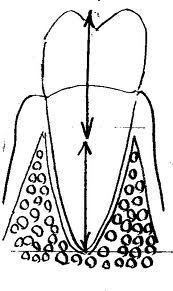When an artificial tooth is needed, whether because you have lost your teeth or when your teeth is badly broken down, there are several choices that you can opt for, i.e. crowns, bridges, dentures or implants. In this article we will be weighing the pros and cons of implants and tooth crowns.

Dental crown
Dental crowns:
Types (based on material of the crown):
1. Gold– popular in the olden days, but not so now, as people revert to the more natural-looking ceramic or PFM crowns
2. Full Ceramic-gives a natural tooth appearance, but ceramic is brittle, hence it has to be of sufficient thickness, i.e. more tooth structure is removed to enable placement of a full ceramic crown.
3. Full metal-metal is strong, hence only a minimal amount of thickness of metal is required.
4. Porcelain fused to ceramic (PFM crowns)-combines the strength of metal and the natural tooth appearance of porcelain/ceramic.
Advantages:
1. Retain natural root and supporting structures
It is always better to preserve the tooth as much as possible, because once the tooth is lost, the loss is permanent, and it can lead to other problems such as loss of its supporting structures such as ridge resorption.
2. Does not require extensive and invasive surgery (see implant section below)
3. Able to duplicate natural tooth appearance
With the advancement in ceramics, crowns are now able to duplicate the appearance of a natural tooth.
4. Can be used as support for an overdenture.
Disadvantages:
1. This option can only be considered if the tooth is not too badly broken down, or if the root of the tooth (the part of the tooth below bone level) is long enough to give retention for the crown. In cases of periodontal diseases where the there is bone loss around the tooth, the crown of the tooth (part of the tooth above bone level) increases while the root decreases. Studies have shown that the crown-to-root-ratio should ideally be 1:2, but should be at a minimum of 1:1.
2. Tooth substance removal
Several mm of tooth substance has to be removed from the tooth all around so that it can accommodate a crown. If tooth substance removal is not sufficient (termed “under-reducedâ€), the crown material may not be thick enough, and consequently a brittle crown results that can easily fracture under chewing load. Sometimes, to compensate for under-reduction, the crown is made thicker beyond the initial size or shape of the natural tooth. This can lead to unfavorable appearance, and accumulation of plaque and calculus beneath the crown which then leads to periodontal disease.
On the other hand, tooth substance removal should be kept as minimal as possible, for the more tooth substance is left, the more retention it will contribute to the crown.
Hence there needs to be a balance between tooth substance removed and tooth substance left intact, and sometimes it can be difficult to judge when is either more important. Nevertheless, considering that an implant would require that the whole tooth be removed, a patient can first opt for a crown, and then go for a denture or an implant should it fail later in the years.
Implants:
Dental implant types can be categorized in different ways:
1. By the type of connection on top of the head of the implant- internal/external hexagon, octagon, etc..,
2. By size- Wide, standard or narrow dental implants,
3. By the material used- Titanium, zircon,
4. By the stages of treatment-single stage or 2 stages
Advantages:
1. Lasts for very long
2. Bite strength almost similar to natural tooth
3. Able to duplicate natural tooth appearance
Disadvantages:
1. Cost
Getting one implant can cost up to thousands of dollars. This is one of the main reasons that deter people from getting an implant.
2.Implants are only feasible if the condition of jaw bone is favorable, eg, needs to have sufficient width and height of bone,
3. It requires extensive and invasive surgery and several clinical visits
After the area to receive implants has been thoroughly examined and deemed favorable, placing an implant require a period of months, during which post-surgical healing is allowed to take place, and osseointegration (a process whereby the implant becomes part of the jaw bone) is achieved.
4. May cause harm to structures within bone such as nerves etc. However, an x-ray is usually taken and the area carefully evaluated before placement of an implant.
5. Subject to infection, causing either peri-implantitis (inflammatory process that affects the tissues around all an implant, resulting in loss of the supporting bone) or peri-implant mucositis (inflammatory process that affects the mucosa or gums adjacent to an implant), and this ultimately leads to failure of implants.
Conclusion
Whether you choose an implant or a crown, it is prudent that you discuss thoroughly with your dentist the option that best suits you, as the condition of the mouth varies between individuals.

